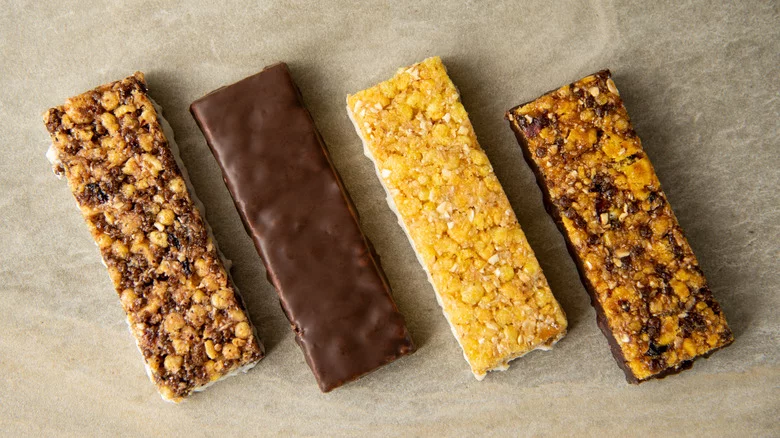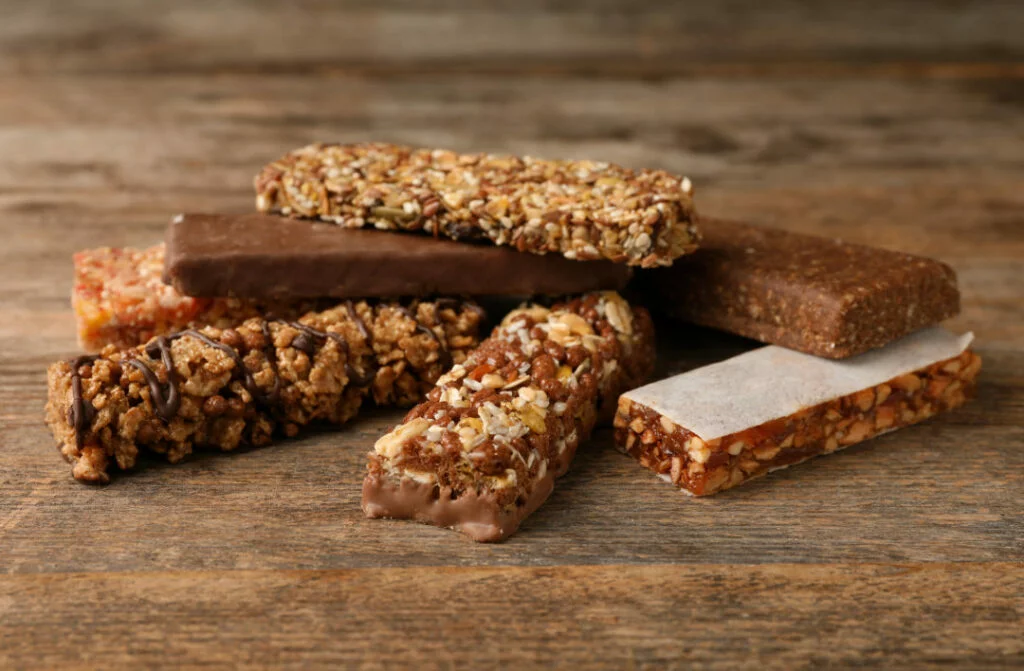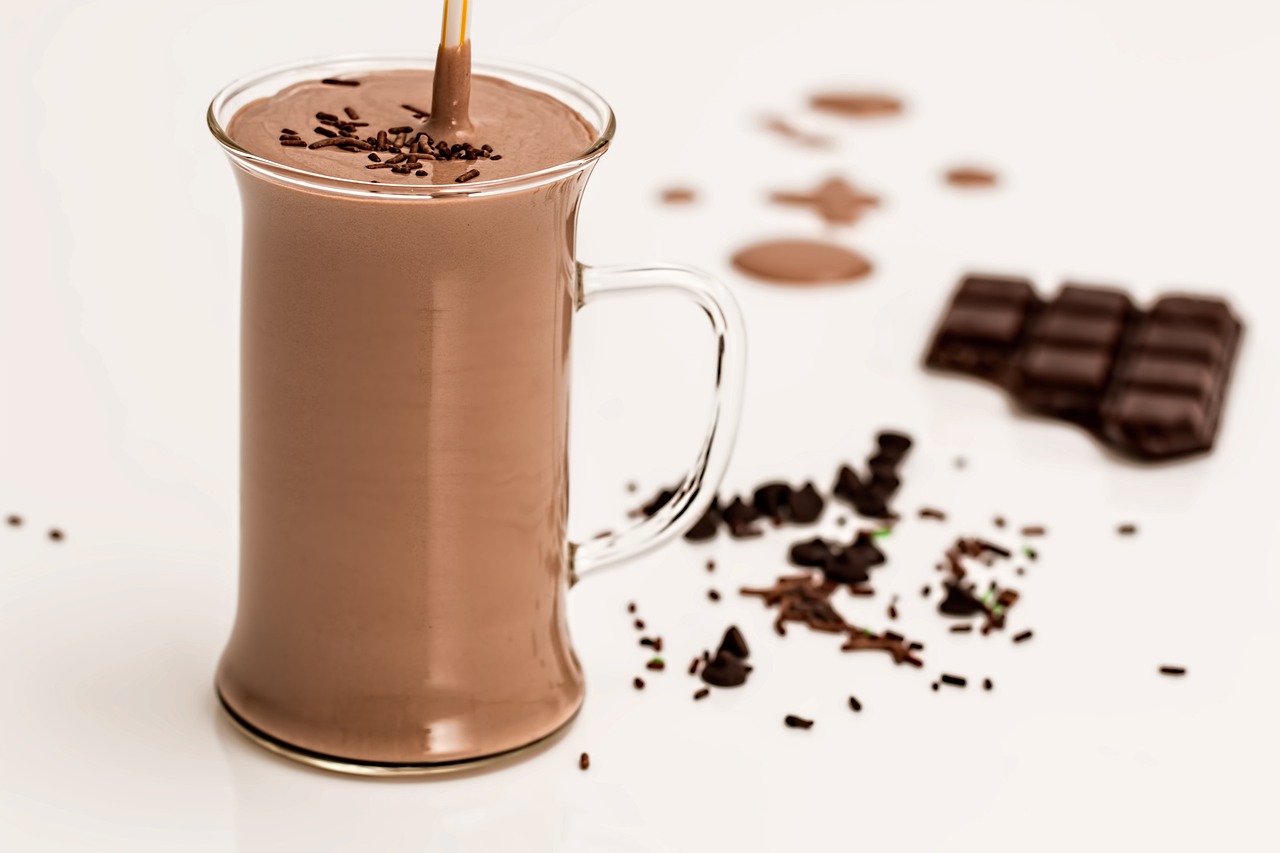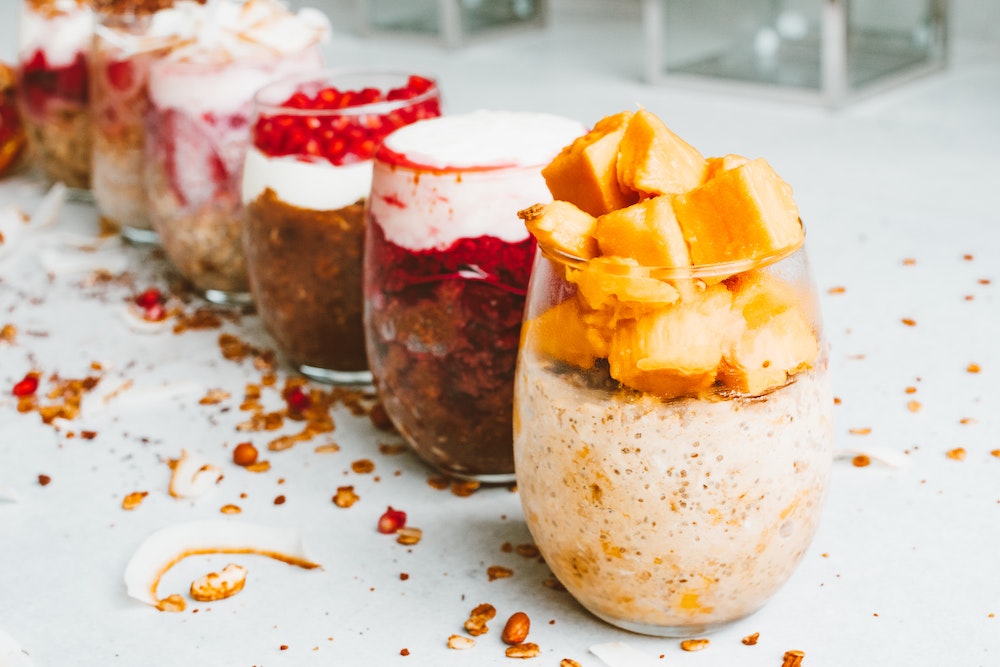Optavia bars have garnered attention for their nutritional benefits and convenience, particularly for those following the Optavia weight loss program. These bars serve as “fuelings” – meal replacements designed to provide essential nutrients and control calorie intake.
With the growing interest in healthier snack alternatives, many people are seeking options similar to Optavia bars without necessarily following the Optavia program.
There are several factors that individuals should consider when searching for alternatives to Optavia bars, such as nutritional value, taste, texture, and specific dietary needs.
With a variety of protein bars and meal replacement options available on the market, it is essential to compare and contrast these alternatives to find the perfect fit for one’s lifestyle and dietary preferences.
Key Takeaways
- Optavia bars are meal replacements with nutritional benefits, but other alternatives are available
- Consider factors like taste, texture, and specific dietary needs when choosing a similar product
- Comparing nutritional value and analyzing individual preferences is crucial in finding the best alternative
Understanding Optavia Bars

Optavia bars are a popular choice for individuals looking for a convenient and nutritious snack alternative while following Optavia’s weight loss program. These protein bars are specifically designed to provide the essential nutrients needed for maintaining a balanced diet.
One notable aspect of Optavia bars is their variety in taste and flavor options. Anyone can find a flavor they will enjoy, with options ranging from chocolate to fruity combinations.
While the taste of each Optavia bar may be satisfying, it is important to note that their primary aim is to offer nutrition and support for weight loss goals.
The protein content in Optavia bars is another factor worth discussing. As a high-quality protein source, these bars are designed to help maintain muscle mass and prevent hunger in between meals.
The exact amount of protein varies between different Optavia bar varieties, but typically ranges from 10-15 grams per serving.
In terms of calorie content, Optavia bars usually contain between 110-130 calories each, making them an appropriate choice for individuals aiming for controlled calorie consumption. However, it is important to be mindful of other daily food intake to ensure overall daily caloric needs are met.
Optavia bars are also formulated with a blend of macro and micronutrients to support the body’s needs while adhering to Optavia’s weight loss program.
The key ingredients in these bars include a mix of proteins, fats, and carbohydrates. This balance of nutrients ensures that each bar provides a nutritious and satisfying experience.
Fats in Optavia bars are generally kept to a minimum, with most bars containing between 3-5 grams per serving. This amount is optimized to maintain a balance between satiety and supporting weight loss goals.
To sum up, Optavia bars can be a helpful tool in the journey of weight loss, providing a healthy, delicious, and satisfying option for individuals looking to maintain a balanced diet.
Nutritional Value of Optavia Bars
Optavia bars are designed to provide a balanced blend of macronutrients, including protein, fiber, and carbohydrates, along with essential vitamins and minerals. These bars serve as a convenient and nutritious snack option for those following the Optavia meal plan.
Each Optavia bar typically contains around 110-130 calories, with a moderate amount of protein ranging from 10-15 grams per serving.
The protein content in these bars helps to promote muscle repair and growth, as well as satiety, making them a suitable option for those aiming to maintain or build lean body mass.
In addition to protein, the bars contain a high fiber content, usually between 4-8 grams per serving. Fiber is essential in promoting healthy digestion and encouraging a feeling of fullness, which aids in weight management.
Optavia bars have a relatively low carbohydrate content, averaging between 12-18 grams per bar, which can be beneficial for individuals following a low-carb diet.
The fat content of Optavia bars varies, with some containing as little as 3 grams and others up to 9 grams. This difference in fat content depends on the specific ingredients used in each bar, as well as the intended purpose of the bar, such as whether it is designed for energy or satiety.
Optavia bars are also formulated with essential vitamins and minerals to support overall health and wellness. This includes a range of B vitamins, vitamin D, calcium, iron, and magnesium. These micronutrients are vital in promoting energy production, bone health, and immune function, among other roles.
In conclusion, Optavia bars offer a nutritionally well-rounded snack option with a balanced blend of macronutrients and essential micronutrients.
They can serve as a convenient and nutrient-dense addition to the Optavia meal plan, assisting individuals in achieving and maintaining their health and weight goals.
Optavia Fuelings and Their Substitutes

Optavia Fuelings are an integral part of the Optavia diet program. These meal replacements come in varying flavors and forms, such as bars, shakes, smoothies, and even cereals.
The structured meal plan, such as the popular Optavia 5&1 Plan, recommends consuming five Optavia Fuelings per day, along with one lean and green meal. Some individuals may seek substitutes for these fuelings due to dietary restrictions, personal taste preferences, or budgetary concerns.
A variety of Optavia Fueling substitutes are available in the market, and many of them can be incorporated into the Optavia diet. It is essential to choose substitutes that are nutritionally comparable to Optavia Fuelings to maintain the diet’s effectiveness.
Optavia fueling replacements should be low in calories, sugar, and fat while providing an adequate amount of protein and fiber.
For those seeking Optavia cereal substitutes, options like high-protein, low-carb cereals can be considered. It’s crucial to read the nutritional labels to ensure that the chosen cereal aligns with the Optavia diet guidelines.
Some popular options for Optavia fueling substitutes include:
- Protein bars: Many protein bars have a similar nutritional profile as Optavia Fuelings. Look for bars with low sugar content, high protein, low net carbs and calories, and sufficient fiber.
- Protein shakes and smoothies: Optavia shake replacements can be found in various forms, such as ready-to-drink shakes or protein powders. Opt for ones with high protein content, low calories, minimal sugar, and sufficient fiber.
- Low-carb snacks: There are numerous low-carb snacks on the market, such as cheese crisps, nuts, or protein chips. Ensure they have a good balance of protein and fiber while being low in calories and carbs.
It’s essential to maintain a balance in the number of fuelings consumed throughout the day and adhere to the diet program’s guidelines. By incorporating Optavia fueling substitutes into the diet plan, individuals can tailor the plan according to their personal preferences or dietary requirements without compromising the program’s effectiveness.
Comparison with Other Protein Bars
Optavia protein bars are popular for their taste and nutritional profile, but there are several other protein bars on the market that deserve mention. In this section, we will compare Optavia to some well-known alternatives.
Quest Bars are a favorite among fitness enthusiasts for their high protein content, typically around 20-21 grams per bar. They also have a high fiber content and a relatively low sugar content. However, they may not be suitable for those with specific dietary restrictions, as they contain dairy and nut-based ingredients.
IQ Bars stand out for their focus on brain health. These bars are keto-friendly and packed with nutrients that promote cognitive function. They contain around 11 grams of protein per bar, which is lower than some others on this list, but their unique ingredients and benefits might sway some consumers.
Meal replacement bars, like those from Soylent, Huel, and others, are designed to replace an entire meal rather than provide a protein boost.
While these bars may contain more calories, fats, and carbohydrates than traditional protein bars, they often provide a balance of essential nutrients and can be convenient for individuals with busy schedules.
No Cow Protein Bars are a popular choice for those following a plant-based diet. These vegan bars boast 20-22 grams of protein per bar and are made without dairy, soy, or gluten. They cater to a wide range of dietary preferences while still offering great taste and texture.
Kind Breakfast Bars focus on simpler ingredients and whole-food sources of nutrition. While they are not specifically protein bars and tend to have lower protein content (around 5 grams per bar), they can be a great option for those looking for a healthier snack option.
Zing Bars were created by dietitians and are available in both vegan and whey protein options. With 14 grams of protein per bar and a variety of flavors, these bars cater to the taste preferences and dietary needs of many consumers.
Thunderbird Bars are another excellent choice for those seeking a vegan, gluten-free, and paleo-friendly option. While their protein content is relatively low (around 7 grams per bar), they emphasize whole food ingredients and unique flavor combinations.
Lean Protein Bars often focus on providing consumers with a high protein-to-calorie ratio. Examples of these bars include those from brands like Pure Protein or Built Bar. These bars typically have at least 15 grams of protein per serving and tend to have less fat and sugar than some competitors.
While each of these protein bars has its unique features and benefits, it is essential for consumers to consider their personal preferences, dietary needs, and health goals when selecting the right bar for them.
Individual Dietary Needs and Optavia Bars
Optavia bars cater to a variety of dietary needs and preferences, making them an appealing choice for health-conscious consumers. It is important for individuals to consider their unique dietary requirements when selecting a nutrition bar that aligns with their health goals.
Gluten-free and Non-GMO Options: For individuals with gluten sensitivities or preferences for non-GMO ingredients, Optavia bars offer gluten-free and non-GMO options to accommodate these preferences while still providing an enjoyable snack alternative.
Dairy-Free Choices: Some Optavia bars contain dairy ingredients, but there are also dairy-free alternatives available. Those who are lactose intolerant or following a dairy-free diet can choose from these options to find a bar that suits their dietary requirements.
Protein Sources: Optavia bars utilize various sources of protein to accommodate different dietary preferences. Soy protein, pea protein, and rice protein are some of the common plant-based protein sources found in these bars, making them suitable for individuals seeking non-animal-based protein options.
Vegan-Friendly Bars: Additionally, some Optavia bars are vegan-friendly, meaning they do not contain any animal-derived ingredients. This makes them a suitable choice for individuals adhering to a vegan lifestyle.
Allergens: It is essential for individuals with food allergies to carefully review the ingredient list of any nutrition bar, including Optavia bars. Common allergens, such as nuts and soy, may be present in some varieties. It is important to choose a bar that aligns with individual allergy considerations and requirements.
Alternative Sweeteners: Optavia bars may feature alternative sweeteners, such as erythritol, a sugar alcohol commonly used to reduce the sugar and calorie content of products. This can be especially appealing to those looking to reduce their sugar intake or consume low-glycemic foods for blood sugar management.
In conclusion, Optavia bars aim to meet a wide range of dietary needs and preferences with their diverse product offerings. By carefully considering individual dietary requirements, consumers can find an Optavia bar that aligns with their specific needs and health goals.
Alternatives to Optavia Bars
There are several Optavia bar substitutes available, providing both healthier and more affordable options for those looking for snacks similar in purpose and nutritional content. These alternatives can typically be found in grocery stores, and many can also be made at home.
Cheaper alternatives to Optavia bars include various store-brand and generic protein bars. They often contain similar amounts of protein and fiber, but come at a lower price point. Brands such as Kirkland Signature and Clif offer tasty, budget-friendly alternatives.
For those seeking a healthy alternative, one can look into granola bars made with wholesome ingredients like nuts, seeds, and dried fruits. These not only provide necessary nutrients, but also offer a wider variety in terms of flavors and textures.
Brands like KIND and Larabar offer minimally processed options with less sugar and additives compared to typical protein bars.
Homemade protein bars are another fantastic option for those wanting to control the quality and ingredients. By making protein bars at home, one can easily customize portion sizes, flavors, and nutritional content to suit individual needs and preferences.
Additionally, many grocery stores carry an array of alternatives to Optavia bars, ranging from traditional protein bars to energy bars and meal replacement bars. Explore different aisles and shelves to find the best option that suits your dietary needs and preferences.
In summary, there are numerous alternatives to Optavia bars that cater to different dietary requirements, budgets, and tastes. From store brands and granola bars to homemade options, there is something for everyone seeking a similar snack or meal replacement option.
Health Benefits of Optavia Bars
Optavia bars are popular for their potential to aid in weight loss. These bars are designed to be low in calories while providing proper nutrition, making them a convenient option for those seeking to lose weight.
With the appropriate balance of macronutrients, including protein, carbohydrates, and fats, Optavia bars can potentially help individuals feel satisfied throughout the day, assisting in reducing overall calorie intake.
Aside from weight loss, Optavia bars also offer nutritional benefits. They are fortified with essential vitamins and minerals that contribute to overall health. As a result, consuming these bars as part of a balanced diet can help ensure that the body receives the necessary nutrients for optimal functioning.
Some individuals may experience stomach issues while trying to lose weight due to drastic dietary changes or the consumption of unfamiliar foods. Optavia bars are formulated with easy-to-digest ingredients and a balanced combination of fibers and nutrients, which can contribute to improved digestive health.
By incorporating Optavia bars into a daily meal plan, individuals may experience fewer stomach issues as they embark on their weight loss journey.
In summary, Optavia bars provide multiple health benefits, including aiding in weight loss, supplying necessary vitamins and minerals, and potentially helping reduce stomach issues.
When consumed as part of a balanced diet, these bars can contribute to overall well-being and support individuals in achieving their weight loss goals.
Special Dietary Bar Options
When looking for bars similar to Optavia, it’s important to consider options that cater to various dietary restrictions and preferences. In this section, we will discuss several special dietary bar options that accommodate different needs.
For those who follow a kosher diet, there are plenty of bars available that adhere to these regulations. Brands such as KIND and Clif offer kosher-certified bars made with wholesome, natural ingredients. These options can be found in various flavors and types, satisfying both taste and nutritional requirements.
Individuals with certain dietary restrictions, such as gluten intolerance, can also find suitable alternatives. Gluten-free bars like Larabars or Enjoy Life’s Chewy Bars are crafted without gluten-containing ingredients and are a safe and tasty snack for those who need to avoid gluten.
Bars featuring cereals provide a unique texture and an extra source of fiber, with options such as Nature Valley’s Crunchy Granola Bars and Fiber One’s Chewy Bars. These bars often contain whole grains or oats, making them a nutritious and filling choice for on-the-go snacking.
Yogurt-covered bars bring in a different element to typical snack bars by adding a creamy, tangy taste. Brands like Luna and Quaker Oats offer yogurt-coated options that combine the benefits of energy bars with the delicious taste of yogurt, providing a satisfying and nourishing treat.
To summarize, there are numerous special dietary bar options available for those seeking alternatives to Optavia bars.
Whether it’s kosher, gluten-free, cereal-based, or yogurt-coated, consumers can find a variety of choices to accommodate their dietary needs and preferences, while still reaping the benefits of a convenient, nutritious snack.
Making Your Own Healthy Bars
In the world of health-focused diets, many people are searching for alternatives to traditional bars like Optavia fuelings. One option is to create your own homemade bars that cater to specific dietary preferences and nutritional needs.
By making your own bars, you can tailor the ingredients to fit a vegan lifestyle or even incorporate unconventional protein sources like chicken breast.
To begin, here is a simple recipe for a vegan protein bar:
- 1 cup oats
- 1 cup vegan protein powder
- 1/2 cup nut butter (e.g., almond or cashew butter)
- 1/4 cup agave nectar or maple syrup
- 1/4 cup water (adjust for desired consistency)
- Optional add-ins: nuts, dried fruits, or chocolate chips
Combine all the ingredients in a bowl and mix until combined. Press the mixture into a lined square pan and refrigerate for a few hours or until firm. Cut into bars and enjoy.
For those seeking a creative twist on protein bars, consider using chicken breast as the primary protein source. This approach requires cooking and blending the chicken until it achieves a smooth consistency like nut butter.
Once the chicken is blended, incorporate it into your desired bar recipe similar to the vegan version. Here’s an example of a chicken-based protein bar recipe:
- 1 cup finely blended cooked chicken breast
- 1 cup oats
- 1/2 cup mashed banana
- 1/4 cup honey
- 1/4 cup water (adjust for desired consistency)
- Optional add-ins: nuts, seeds, or dried fruits
Mix the ingredients in a bowl and follow the same steps as the vegan recipe to shape, refrigerate, and enjoy these unique protein bars.
Making your own healthy bars, whether inspired by Optavia fuelings or other models, gives you control over the ingredients and nutritional content. As a result, you are empowered to create bars that align with your specific dietary preferences, such as vegan or incorporating alternative protein sources.
Ultimately, homemade protein bars offer a delicious and satisfying way to fuel your body on-the-go while ensuring you meet your health goals.
Considerations Alerting Optavia Bar Alternatives
When seeking Optavia bar alternatives, it is essential to keep several factors in mind to ensure a well-informed decision. One of the primary considerations is the price.
Alternatives may vary in cost, with some being more affordable and others more expensive than Optavia bars. It is crucial to find a suitable option within one’s budget while maintaining nutritional value.
Another essential aspect is the label. Always read the nutritional information and ingredients list to ensure it aligns with your dietary requirements and preferences. Be mindful of artificial sweeteners, added sugar, and natural sweeteners, as these can impact taste, sugar content, and overall health effects.
Pay attention to the type and amount of sweeteners used, as this may affect blood sugar levels and the product’s desirability.
Additionally, texture matters when choosing an alternative, as it contributes to the overall satisfaction of the bar. Some people prefer a crunchy bar, while others enjoy a chewier or softer texture.
Optavia bar alternatives come in various textures, so finding the one that suits your preference may require trying a few different options.
Lastly, consider the portion size of the alternative bars. Optavia bars typically come in small, easy-to-consume sizes, which help with portion control and prevent overeating. Look for alternatives with similar portion sizes to maintain consistency in your snack intake.
However, it is also essential to be mindful of the calorie content and nutritional value. Some bars may seem smaller but pack in more calories, while others may be larger but surprisingly low in calories.
Keeping these factors in mind should help in finding an Optavia bar alternative that meets your specific needs, preferences, and lifestyle.
Product Review – The Tastes and Textures
When it comes to bars similar to Optavia, it is important to consider the tastes and textures of each product. Many consumers are keen to try a variety of flavors and textures, especially when it comes to protein shakes and meal replacement bars.
In this review, a few popular options will be discussed, highlighting their unique flavor and texture qualities.
Wonderslim Meal Replacement Protein Bar is a popular choice among consumers looking for an alternative to Optavia. Their bars come in a variety of flavors – ranging from fruity to chocolatey – to suit individual tastes.
The texture of these bars is often described as chewy and dense, providing a satisfying meal replacement experience. An added bonus is the ample protein content, clocking in at 15 grams per bar, ensuring consumers stay full longer.
GoRaw Dark Chocolate Protein Bars offer a unique flavor and texture for those who prefer a more natural, raw approach to their meal replacement options. These bars have a rich dark chocolate taste, enhanced by a hint of sea salt and natural sweetness from dates.
The texture of GoRaw bars is both dense and moist, with a slight crunch from sprouted watermelon seeds. With 12 grams of plant-based protein per bar, consumers can feel confident they are making a healthier choice while still satisfying their taste buds.
In terms of protein shakes, there are many options available to suit varying preferences in taste and texture. One such option is the Optavia Chocolate Shake, which boasts a rich, velvety chocolate flavor. The texture of this shake is smooth and creamy, making it easy to drink and enjoy.
With 14 grams of protein per serving, it serves as an ideal supplement for individuals seeking additional protein in their diets.
In conclusion, the market offers a myriad of bars similar to Optavia, catering to a wide range of tastes and textures.
Consumers should consider their individual preferences and nutritional needs when choosing between options like Wonderslim Meal Replacement Protein Bars, GoRaw Dark Chocolate Protein Bars, and Optavia protein shakes.
Each product ensures that fulfilling nutritional requirements can still be a delicious and enjoyable experience.
Biggest Optavia Competitors You Should Know About
Quest Nutrition is a notable Optavia competitor that offers a wide range of high-quality dietary supplements, including protein powder, protein bars, and snacks. Their products are known for using whey protein isolate and soy protein isolate for a balanced intake of nutrients.
They cater to a soy-free market, ensuring that their customers have diverse protein sources available to them.
No Cow Peanut Butter Chocolate Chip bars provide an alternative to traditional protein bars, catering to consumers seeking plant-based protein options.
Their ingredient list is heavily focused on using natural, vegan-friendly components, making it a viable option for those with dietary restrictions or preferences.
Built Salted Caramel is another strong competitor in the health and nutrition market. Offering protein bars in various flavors, Built’s products are known for their great taste and texture.
Their Salted Caramel bar has become a fan favorite, showcasing their ability to deliver exceptional quality while maintaining a nutritious profile.
Kellogg’s Special K Brownie Sundae is a protein bar designed for people on the go, offering a convenient option for those seeking a quick, nutritious snack. With a dessert-inspired taste, this protein bar from a well-known brand brings a sense of indulgence to those staying conscious about their diet.
NuGo Smarte Carb Peanut Butter Crunch bars offer a low-carb option packed with protein and essential nutrients. Their peanut butter crunch flavor highlights their commitment to creating delicious, healthy alternatives for those following low-carb lifestyle choices.
Aloha Mini Chocolate Chip Cookie Dough presents a dessert-inspired protein snack that caters to consumers searching for a healthy treat.
Crafted with plant-based ingredients, this mini-cookie dough snack features protein derived from sources like pumpkin seed protein, making it a unique and innovative addition to the health food market.
Lastly, RXBars have earned a reputation for their minimal, transparent ingredient lists, and high protein content. Focused on delivering wholesome options, RXBars have carved a niche in the health-conscious community for those looking to make informed choices about their snacking options.
In sum, these Optavia competitors offer unique and innovative alternatives in the health and nutrition market. From plant-based protein sources to indulgent dessert-inspired flavors, these brands cater to diverse consumer preferences and dietary requirements, making them important players to know about.
Also, read a related post on Protein Shakes Similar to Optavia: Top Alternatives Explored
Frequently Asked Questions
What are some alternatives to Optavia bars for weight loss?
There are various alternatives to Optavia bars for weight loss, such as Nutrisystem, Jenny Craig, and Atkins bars. Other options include KIND bars, RXBARs, and Quest bars. The key is to look for options that are high in protein, low in sugar, and contain a good amount of fiber.
Which protein bars have similar nutritional value to Optavia Bars?
Protein bars with similar nutritional value to Optavia Bars include RXBARs, Quest Bars, and think! bars. These bars generally have high protein, low sugar, and adequate fiber content. When selecting a protein bar, always check the nutrition label for a balance of macronutrients that fits your dietary goals.
How can I make homemade Optavia-like bars?
To make homemade Optavia-like bars, start with a protein powder base, such as whey or plant-based options. Add a healthy fat, such as almond or peanut butter, and a fiber source like ground flaxseed or chia seeds.
Sweeten the mixture with a natural sugar alternative, such as stevia or monk fruit. Add optional ingredients like nuts, dried fruits, or dark chocolate chips for flavor and texture. Press the mixture into a lined baking dish, refrigerate until firm, and cut into bars.
Are there protein shakes comparable to Optavia shakes?
Yes, there are protein shakes with similar nutritional profiles to Optavia shakes. Some popular options include Premier Protein, Orgain, and Pure Protein shakes.
These shakes typically have a high protein content, low sugar, and a balanced amount of carbohydrates and fats. Always read the nutrition labels to find a shake that best aligns with your dietary needs and goals.
Where can I find Optavia bar substitutes for sale?
Optavia bar substitutes can be found at grocery stores, health food stores, and online retailers like Amazon. Popular brands with similar nutritional values include RXBAR, Quest Bars, and think! bars. Make sure to compare the nutrition facts to ensure the bars align with your dietary goals.
What are some DIY Optavia Fueling alternatives?
For DIY Optavia Fueling alternatives, consider making homemade protein bars, shakes, or soups with similar macronutrient profiles. Use ingredients like protein powder, healthy fats, fiber-rich foods, and natural sweeteners.
Preparing these alternatives at home allows you to control the ingredients and tailor them to your preferences and dietary needs.







